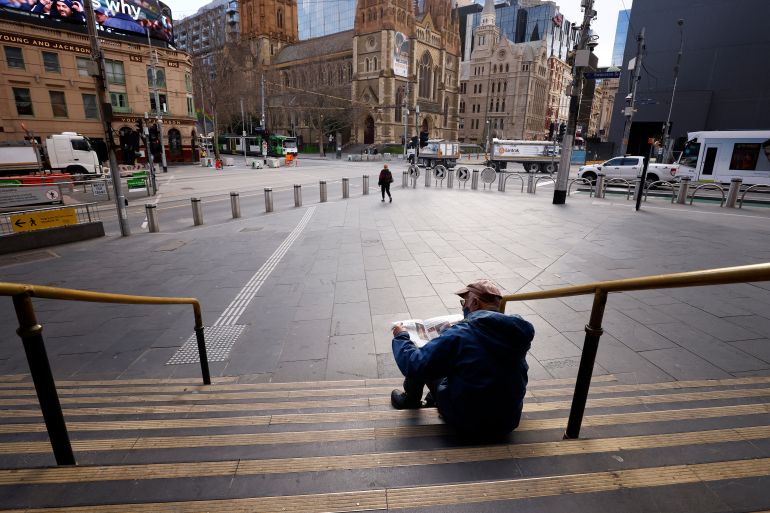Australia’s retail boom slows as Omicron spreads
Retail sales slide in December due to COVID surge after two months of big gains.

Australian retail sales slid in December as payback for two months of spectacular gains and a further slowdown was likely this month as a surge in coronavirus cases led to a self-imposed lockdown by many consumers.
Figures from the Australian Bureau of Statistics out on Tuesday showed retail sales fell 4.4 percent in December to 31.9 billion Australian dollars ($22.53bn), after a huge 7.3-percent jump in November.
Keep reading
list of 4 itemsMyanmar coup: A year of protest, reprisals and diplomatic inertia
World accused of ‘sitting and watching’ as Myanmar slides to war
COVID endangers fragile health systems in Pacific nations: Report
Sales were still up 4.8 percent on a year ago and sharply higher for the December quarter as a whole, suggesting household spending made a major contribution to economic growth.
“Retail sales remain elevated compared to pre-pandemic levels, with December’s monthly turnover the second-highest level in the series following last month’s record,” said Ben James, director of quarterly economy-wide statistics at the ABS.
That strength will likely be welcomed by the Reserve Bank of Australia (RBA), which holds its first policy meeting of the year on Tuesday, and is one reason it could decide to end its bond-buying campaign this month.
It is widely expected to hold interest rates at a record low of 0.1 percent, but analysts argue the economy no longer needs the additional stimulus from asset purchases.
The central bank will also have to lift its forecasts for inflation after consumer prices rose a surprisingly sharp 3.5 percent in the year to December, while core inflation jumped to 2.6 percent.
‘Household balance sheets in good shape’
The bank had not expected core inflation to reach 2.5 percent until the end of next year and financial markets are wagering it will now be forced to hike rates as soon as May.
The Omicron wave did put a dent into consumption early in January, but growth in cases has since levelled off and weekly spending on bank cards is slowly recovering.
Households still have a huge buffer of savings amassed during the long lockdowns, while a strong labour market has kept people in jobs and earning a wage.
Data on household bank deposits out on Monday showed another 20 billion Australian dollars was squirrelled away in December, leaving them 242 billion Australian dollars higher than before the pandemic.
“This store of highly liquid savings is now equivalent to around a 20 percent of annual household consumption, and suggests that in aggregate business and household balance sheets are in good shape,” said Taylor Nugent, an economist at NAB.
Household wealth has also been fattened by a boom in home prices, with annual growth hitting 22.4 percent in January for the biggest gain since 1989.
The ABS estimates the housing stock was worth A$9.3 trillion at the end of September, having climbed one trillion billion Australian dollars in just six months.